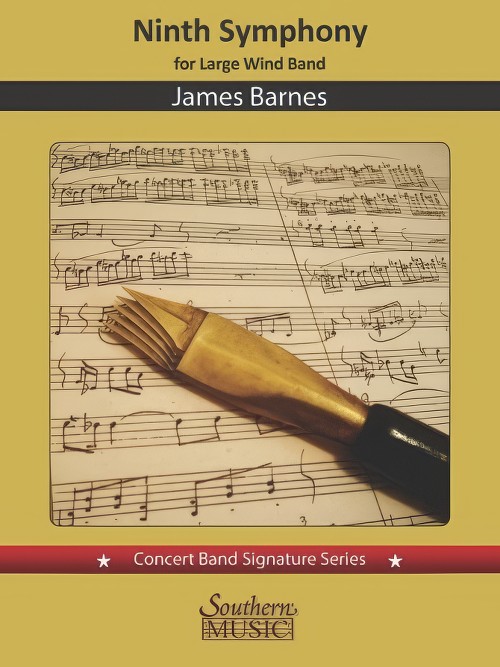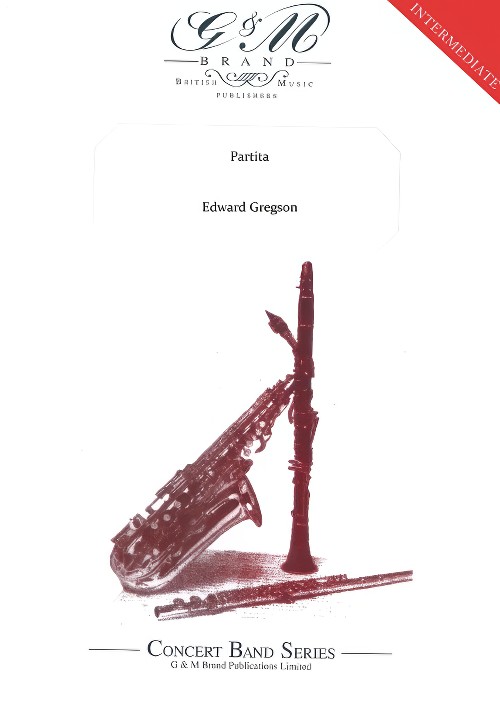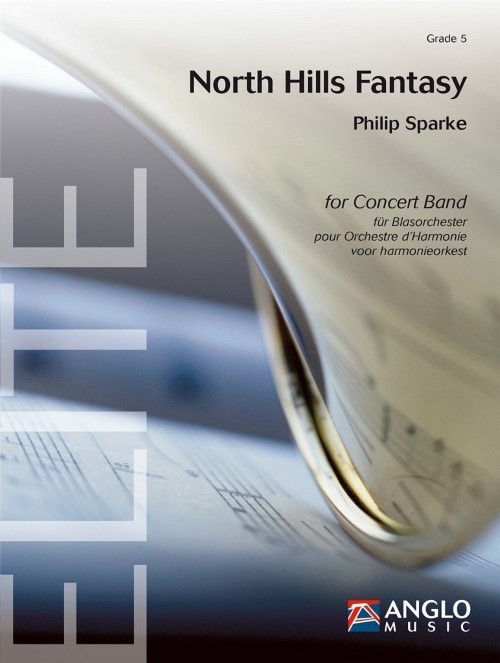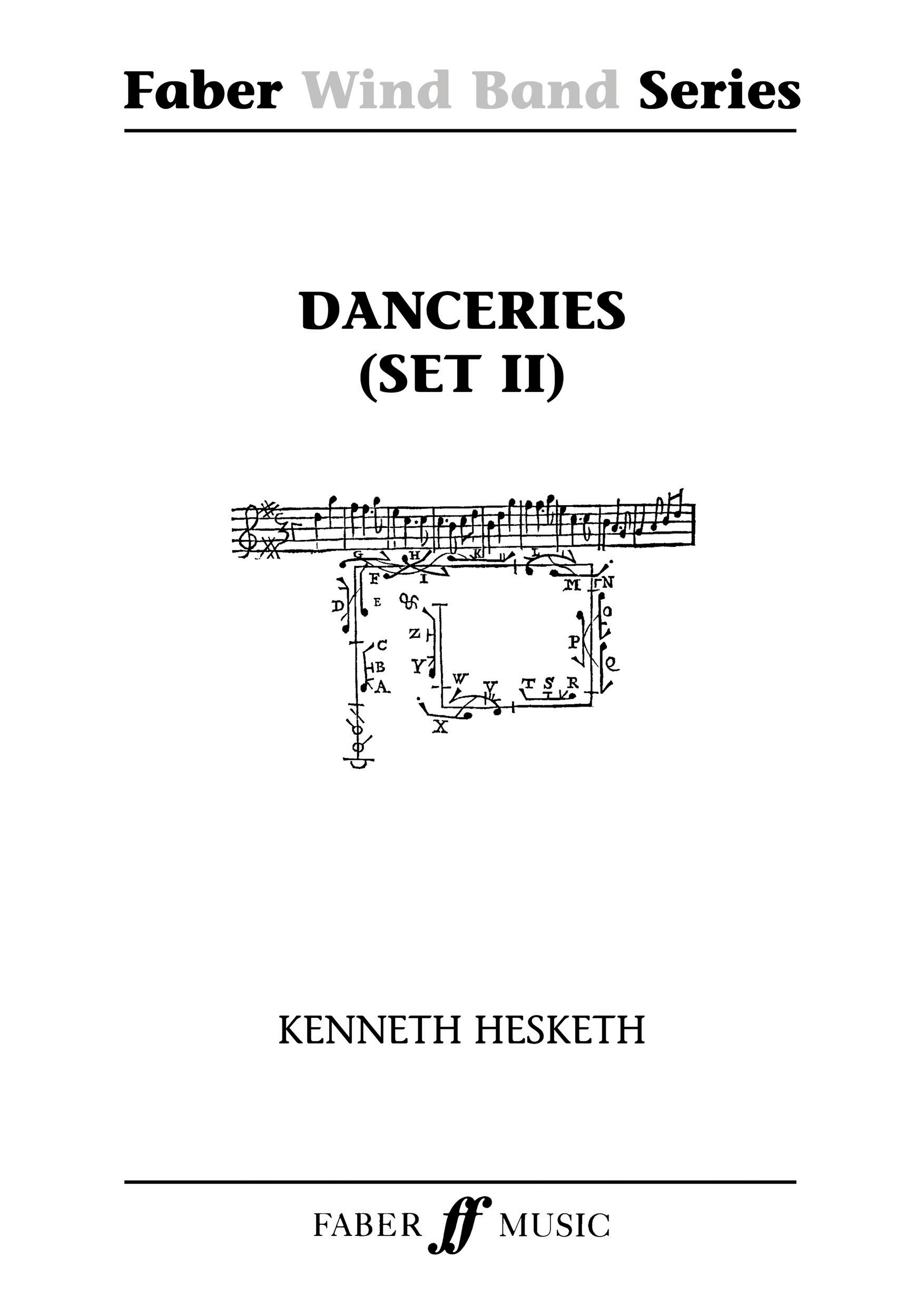Results
-
 £309.99
£309.99Ninth Symphony (Concert Band - Score and Parts) - Barnes, James
Premiered on 21 September, 2018 in Lawrence, Kansas by The University of Kansas Wind Ensemble (Dr. Paul Popiel, conducting), James Barnes' Ninth Symphony was composed between January and late June of that same year. This large work was commissioned by a consortium of twenty-one college bands, community bands, professional bands and individuals to help mark the 70th birthday of the composer (b. 1949). It is an expansive forty-minute work in four movements, of which the composer writes, "This is my last symphony...this work represents a compendium of all that I have learned during the fifty years of composing and scoring for this wonderful new medium: the modern wind band." The first movement, subtitled Elegy, is based around G minor. It is the longest movement of the symphony. Tragic and despondent in character, it is cast in sonata-allegro form. The second movement is entitled Scherzo. Barnes claims that "I have always wanted to write a waltz," and that is how this movement is cast, in a modified rondo form in D minor. In contrast to the mood of the first movement, the scherzo is a delightful posy of expansive melody, splashy color, humor and rhythm. The third movement, which is in a modified tertiary form, is entitled Night Music. In contrast to the scherzo, this movement begins with a mysterious incantation, first displayed by solo Alto Flute. The music becomes even darker and more mysterious, while overall the movement effectively expresses an "otherworldly" mood, ending with a solo soprano offstage which suddenly emerges, eerily singing a modified version of the opening incantation. Cast in sonata-allegro form, the fourth movement is most definitely a rousing Finale, beginning with a brilliant fanfare and undergoing several mood transformations before emerging into the final coda, ending the symphony with an energetic splash of color. Duration: 40.00
Estimated dispatch 7-14 working days
-
 £84.95
£84.95Partita (Concert Band - Score and Parts) - Gregson, Edward
Partita' was originally composed for brass band in 1973. The work is in three movements, and uses material based on the 13th century plainsong 'Dies Irae". the opening Intrada is sombre. the second movement is a 'chorale and variations. the chorale melody follows the main outline of the plainsong. the five variations are varied in mood and intensity. the final March is much happier in mood and has a lyrical tune in the middle first heard on horns. However, references to the 'Dies Irae' are still apparent and the final bars of the work contain a quote from the opening movement.
Estimated dispatch 7-14 working days
-
 £16.95
£16.95Partita (Concert Band - Score Only) - Gregson, Edward
Partita' was originally composed for brass band in 1973. The work is in three movements, and uses material based on the 13th century plainsong 'Dies Irae". the opening Intrada is sombre. the second movement is a 'chorale and variations. the chorale melody follows the main outline of the plainsong. the five variations are varied in mood and intensity. the final March is much happier in mood and has a lyrical tune in the middle first heard on horns. However, references to the 'Dies Irae' are still apparent and the final bars of the work contain a quote from the opening movement.
Estimated dispatch 7-14 working days
-
 £118.99
£118.99North Hills Fantasy - Philip Sparke
North Hills Fantasy was commissioned by the North Hills High School Bands, Pittsburgh, Pennsylvania (director: Len Lavelle) as part of a commissioning programme that has run since 1965 - the longest of its kind in the USA. The work opens with a reflective, unaccompanied solo for alto saxophone which develops into a chorale for horns and saxes. This is taken up by the trumpets and subsides to a change of key and mood, with highly decorated folk-like solos for clarinet, bassoon and saxes. These solos build to a climax for full band, which heralds a triumphant return of the horn chorale, accompanied by florid woodwind figuration. But the mood soon winds down; fragments of earlier melodies return calmly to peacefully close the work.
Estimated dispatch 7-14 working days
-
 £82.50
£82.50Incantation and Shadow Dance - Barry E. Kopetz
Incantation and Shadow Dance is a musical representation of the appearance of the witches in the Shakespeare play "Macbeth." The piece opens with two exceptionally long and emotionally charged measures, the mood slowly building, much like "chanting over a cauldron," dark, mystical and enchanting, invoking the spirits of the night. Then everything changes very abruptly, as a rhythmic introduction announces the appearance of the spirit dance. It represents a "dance macabre" and as such, brings a sense of impending evil and darkness to the mood until the full complement of spirits are now dancing around the fire. The gathering of "storm clouds" heralds the appearance of all manner of dark and sinister creatures joining the dance which builds to climax as all the spirits gather for the final frenzied finale.
Estimated dispatch 7-14 working days
-
 £118.99
£118.99North Hills Fantasy (Concert Band - Score and Parts) - Sparke, Philip
North Hills Fantasy was commissioned by the North Hills High School Bands, Pittsburgh, Pennsylvania (director: Len Lavelle) as part of a commissioning programme that has run since 1965 - the longest of its kind in the USA. The work opens with a reflective, unaccompanied solo for alto saxophone which develops into a chorale for horns and saxes. This is taken up by the trumpets and subsides to a change of key and mood, with highly decorated folk-like solos for clarinet, bassoon and saxes. These solos build to a climax for full band, which heralds a triumphant return of the horn chorale, accompanied by florid woodwind figuration. But the mood soon winds down; fragments of earlier melodies return calmly to peacefully close the work. Duration: 5.30
Estimated dispatch 7-14 working days
-
£125.00
Danceries (Set II) - Kenneth Hesketh
Danceries Set II was commissioned by Keith Allen and Birmingham Symphonic Winds, supported by PRS for Music Foundation and the RVW Trust. The world premire of this work was given by Birmingham Symphonic Winds, conducted by Keith Allen, at the CBSO Centre, Birmingham in 2011. This second set of Danceries continues the format established in Danceries (Set I), namely in using material taken from Playford's Dancing Master, a collection of folk and popular tunes published in the seventeenth century, to form the basis of an extended dance suite. In this set, the melodies have been more abstracted and project only a distant echo of their original forms, but as before, each movement is self-contained, colourful and direct, with its own distinct mood.The outer movements - Jennie's Bawbee and Peascod's Galliarda - share a use of driving percussion writing with a military air. Tom Tinker's Toye and Heart's Ease (movements two and three) are both settings of original melodies. All movements are more extended than in the first set, with a freer use and approach to the material; melodies now occur in various keys and are supported by a greater variety of harmonic colouring. The result is a richer, even more exhilarating set of dances. Danceries has come of age!
In stock: Estimated delivery 1-3 days
-
 £149.40
£149.40Tenn Lys - Eyvind Skeie
"Candles in Advent" is a beautiful melody with great lyrics. It was originally written for an Norwegian Advent TV-series in 1985.In this arrangement, the oboe has some solo passages (cue notes in flute). I Have tried to vary the instrumentation without going beyond the beautiful Christmas mood.The harmonization is simple and functional. Let the soloists "speak" with good phrasing and focus also on harmony in the unison melody lines. Good balance and intonation in the accompaniment can make the performance a little gem on the Christmas concert.- Reid Gilje -
Estimated dispatch 7-14 working days
-
 £176.50
£176.50Masquerade - Philip Sparke
MASQUERADE was commissioned by Stadtmusik Willisau from Switzerland (Reto Gdel, conductor) to celebrate their 175th anniversary in 2003 and first performed by them in November that year. 1. OvertureThe first movement opens with a fanfare-like figure, featuring the brass, before the main them is introduced over staccato chords. After a short, syncopated interlude a legato theme is introduced in the tenor register and material is developed until the music slows temporarily. The opening theme returns and the 'tenor' tune is taken up by the whole band until the opening fanfare returns to close the movement. 2. ElegyThe slow movement opens intensely with a bare two-part theme, whichleads to a passionate chorale-style melody. A second theme is introduced and leads to a climax, a return of the chorale theme and a pianissimo repeat which again leads to a full-band climax. The two-part theme returns quietly to create a peaceful close. 3 InterludeA short movement which changes the mood to introduce:- 4 FinaleThree violent chords preface a lively syncopated opening theme. The trumpets introduce a second idea, which is treated fugally, and this in turn leads to the main melodic idea of the movement, over staccato chords. A contrasting subject is then introduced in the middle of the band, followed by echoes of the first movement fanfare. The opening theme returns and material is revisited until the opening fanfare returns in full to end the work triumphantly.
Estimated dispatch 7-14 working days
-
 £209.99
£209.99Diamond Concerto - Philip Sparke
Diamond Concerto was commissioned by Musikverein Mrschied from Germany - Dr. Eric Grandjean, conductor - for a special concert featuring Steven Mead as guest soloist. Together they gave the world premiere on 28th April 2012 in the town theatre of Idar-Oberstein.The commission is a highlight in the 30-year friendship between composer and soloist, which has included many mutual CD projects and concerts and, now, a concerto. Sparke had Steven Mead's special euphonium sound in his head throughout the composition process and made free use of the variety of styles which the world-renowned virtuoso has made his own during his highly successful solo career.The village ofMrschied lies to the west of Frankfurt am Main in the area known as the German Road of Precious Stones, which is famous for its thriving gem industry. Because of this it was decided to give the commission a local connection by choosing the title, Diamond Concerto. Each of the three movements is named after a famous diamond:1 EARTH STARis rather stern in mood, opening with a free fantasy for the soloist over a static chord from the band. This leads to an Allegro Moderato in minor mode where small motives are gradually repeated and developed by both band and soloist.2 OCEAN DREAMuses a varied quote from the composer's Music for Battle Creek, including a melting slow melody that was originally written with Steven Mead in mind.3 BLUE HEARTwas written, at Steven Mead's suggestion, in bebop style and takes the form of a jazz waltz. The quasi-improvisatory central section features a call-and-response passage for the soloist and upper woodwinds.Soloist: Difficulty 6Diamond Concerto is available for euphonium and piano (AMP 374-401) as well as for euphonium and brass band (AMP 354-030).
Estimated dispatch 7-14 working days

